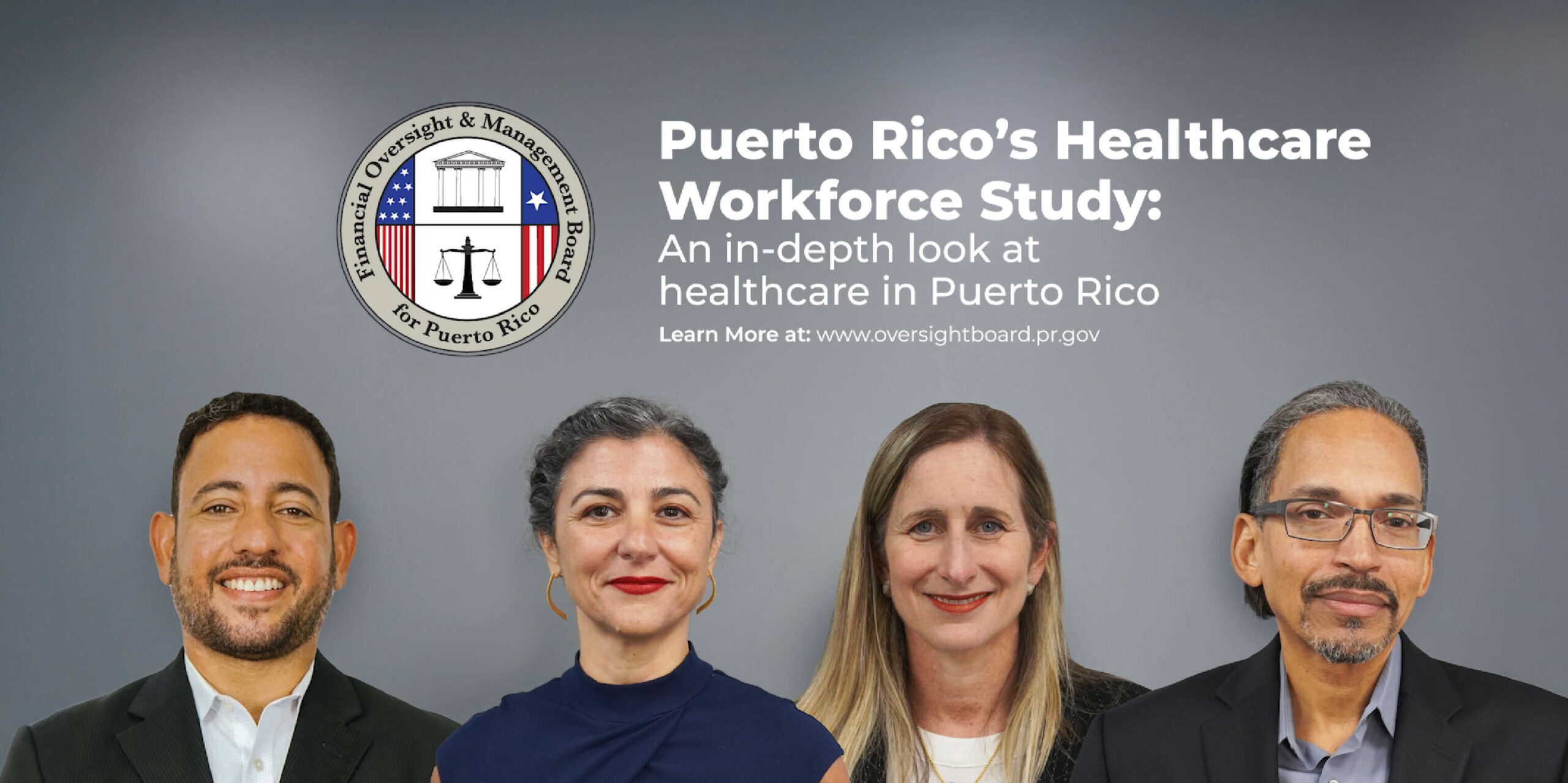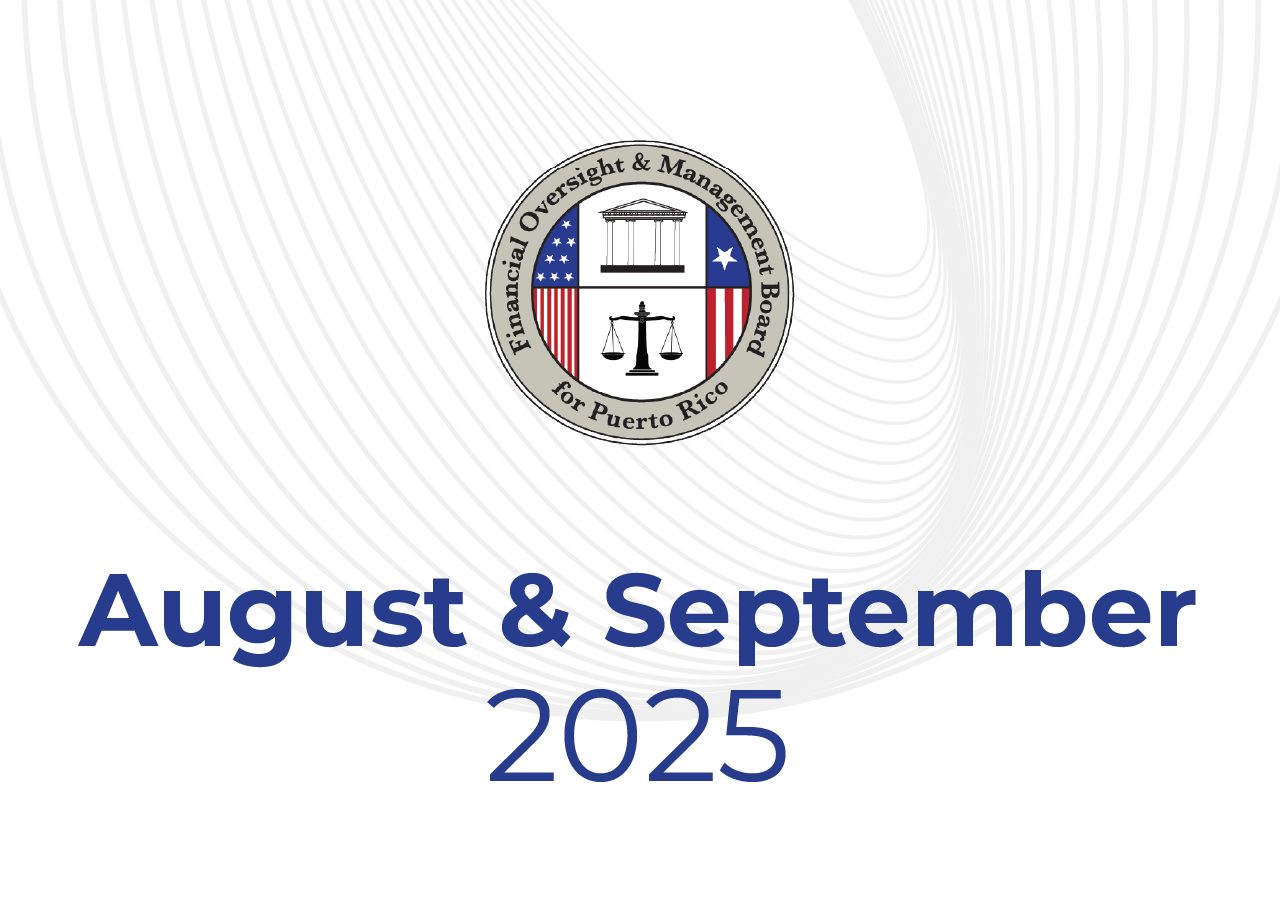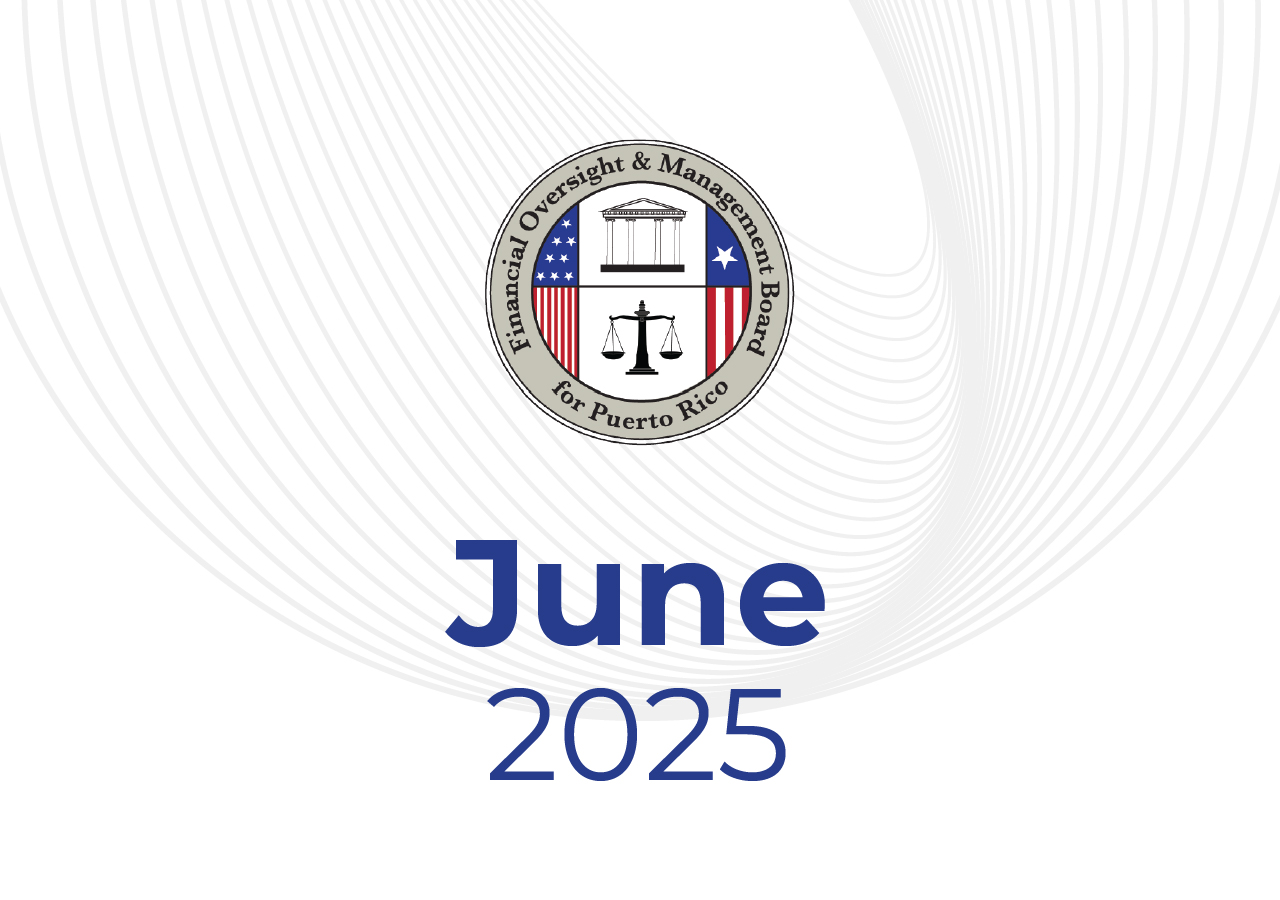Healthcare is very important for Puerto Rico’s residents and one of the essential elements of the healthcare system is its workforce. The shortage in healthcare professionals is apparent to everyone in Puerto Rico, but to date much of this shortage’s evidence has been anecdotal.
To understand the problem and where it exists, the Oversight Board commissioned FTI Consulting to conduct a study that focuses on identifying the gaps within Puerto Rico’s healthcare system, so that public policy decisions on this issue can be made based on reliable data.
FTI consulting completed the Puerto Rico Healthcare Workforce Study and the report can be found on the Oversight Board’s website. For a summary of the report, click here
Arnaldo Cruz, Deputy Executive Director at the Financial Oversight and Management Board for Puerto Rico, spoke with three healthcare experts who worked on the Puerto Rico Healthcare Workforce Study. They are Juan M. Montañez, Senior Managing Director at FTI Consulting; Annie Mayol, Managing Director, Health Solutions at FTI Consulting; and Maria Fernanda Levis, CEO and Founder of Impactivo.
Q&A
Why was the study conducted?
The main purpose of the study is to research the gaps in the number of healthcare providers in Puerto Rico. The issue surrounding healthcare is very important for the Island and one of the essential elements of the healthcare system is its workforce.
For years there have been reports that there are many gaps, that Puerto Rico does not have enough healthcare providers, and that there aren’t enough doctors on the Island. To understand the problem, where it exists and what is causing it, the Oversight Board commissioned a study from FTI Consulting to have answers so that decisions can be made based on data.
This report, for the first time, brings data from the Government and the private sector, consolidates that data, and makes a forecast, looking ahead to 2035.
What was FTI’s methodology or approach to obtaining the information?
The study has several components. First, FTI used a model that compiled data from practically all the healthcare sources that were identified in Puerto Rico: government agencies, medical insurers, and associations that represent sectors of the healthcare workforce. From this model, FTI established the demand for health services in Puerto Rico, and then compared that with the number of providers in Puerto Rico, to then establish what the gaps are.
FTI also conducted a series of interviews with representatives from all sectors of the healthcare workforce in Puerto Rico. More than 60 people who are in leadership positions within the healthcare sector, representing 22 organizations, from the Government, academia, hospitals, and other types of providers were interviewed.
In addition, nearly 1,000 people in the healthcare sector, such as providers, health services administrators, and students who are in the process of becoming doctors or therapists, responded to a survey in order to understand what makes them, perhaps, contemplate leaving Puerto Rico when they already have the qualifications to be physicians or providers in Puerto Rico, or what obstacles they encounter when providing healthcare services in Puerto Rico.
What are the major findings of the study?
Puerto Rico has critical gaps when it comes to medical specialists, but also when it comes to the staff that supports the specialists, that is, therapists and nurses. This support staff are called allied health workers. They support doctors so they can provide their services, because if a patient has surgery, healthcare after the surgery is as essential as the surgery.
This is where there are gaps, and the gaps are not only big, but they will continue to increase if Puerto Rico doesn’t act.
The gaps also increase because the provider who is there today is older and may soon retire. In other words, the study shows that many providers who are practicing today are 70, 75, 80 years old, but they cannot retire because there is no other provider like them in their municipality.
This also speaks to the gaps in access that exist outside the San Juan metropolitan area. Outside the metro area is where the population has faced the most significant challenges when it comes to access, whether that be lack of transportation or other issues. These are the areas where Puerto Rico has the biggest gaps in access to medical specialists.
Another issue is the percentage of time the healthcare professional must invest in administrative tasks, instead of seeing patients. This is critical because if a doctor only has eight hours in a working day and 30% of that time is spent doing administrative work, then there is less time available to see patients.
Besides gathering data on healthcare providers in Puerto Rico, the study also analyzed how many doctors are needed. How were those needs identified?
FTI has developed a fairly sophisticated model that obtains information from many sources, including local sources such as insurance companies, the Health Insurance Administration (ASES), Medicare, and federal government sources.
The model looks at the medical conditions that exist within the population, which is an aging population, that has many chronic conditions, and that tends to have needs for social services. It looks at the prevalence of these conditions to understand the healthcare demand, how many services of each kind the population needs. FTI studied this information and how it translates to needs in terms of healthcare providers in Puerto Rico.
Please provide more details on the issue of access.
The problem of access has to be broken into parts. So, the first part: Are there enough doctors or not? There are some areas where there are enough. There are some areas where there aren’t enough.
One of the specialties that has a big need is nephrology. Nephrologists are the doctors that manage kidney health.
If you are referred to a nephrologist, you are already very sick, and you will most likely get a diagnosis which requires dialysis. You need to undergo dialysis treatment.
What FTI found in the interviews is that, many patients only has access to an emergency and they are, therefore, not receiving the medical service they need when they need it, and because of this those patients continue to get sicker and sicker, and the need for a nephrologist becomes greater.
One aspect of the problem is how many doctors are graduating from their medical residencies. How many doctors do we have? But, [when we look at this] that number only shows how many doctors exist. A large number [of doctors working in P.R.], more than 25% of doctors, are looking for other income. Half are looking for another type of job. So, what does Puerto Rico need to do so that doctors can provide services to patients?
Which leads to another important issue. What are some of the study’s recommendations?
FTI provides recommendations that are actionable to address the problems. For example, knowing that there is a serious problem in the lack of support resources, FTI has recommendations as to what incentives can be provided to not only retain, but also generate more support personnel, which is less expensive and tends to be more cost effective than bringing in or looking for more providers.
Support personnel are needed to keep patients healthy, so that they do not create more costs and pressure on the system. FTI’s recommendations are holistic, to address the entire problem. If Puerto Rico does not address the issue of demand, it will never solve the problem of supply, because one impacts and pushes the other.
Now that the study is completed, what’s next?
The call to action is for people to visit the Oversight Board’s webpage and read the report. The report is extensive, with a lot of data and information. The report outlines the gaps, the reasons for them, and provides recommendations on how to close the gaps.
The Oversight Board is going to take these recommendations to the Government and the private sector so they can work together on how the recommendations can be implemented.
The Government of Puerto Rico can update the information within the report, annually or every two years, and make public policies with the most updated information.
To learn more about the Puerto Rico Healthcare Workforce Study listen to the FTI Consulting team’s presentation at the Oversight Board’s 47th Public Board Meeting.





